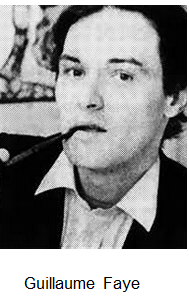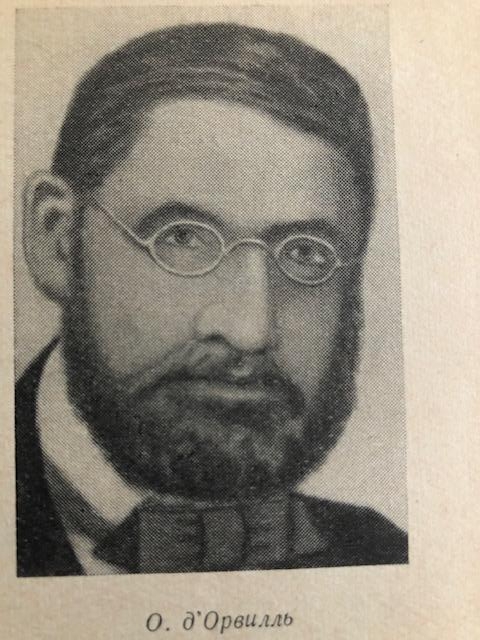With the end of Lent approaching, the Master gave the good word.
For this occasion, we appreciated the return of our friend Pierre who came to join the core group.
Below is the masterly report in pictures
Master's words

"The physical elimination of the Beast is well seen by God if, thanks to it, a people is liberated" (Saint Thomas Aquinas).
"A country is only as good as its education system" (R. Barre, Grand Prix de l'humour noir 1978).
"Man is ice to truths, he is fire to lies" (La Fontaine).
"You were carrying a gun, wasn't it to kill? -- I also carry a rape kit, and I didn't rape" (Cl. Eastwood).
"The ideal, for a pawn, is to go to Queen" (A. Willemetz congratulating former teacher and supervisor Marcel Pagnol on his marriage to Jacqueline Bouvier).

"Women are the aristocracy of lies" (A. Hermant).
A tribute to Guillaume Faye, whom I knew well 40 years ago, and who has just left us. Brilliant political philosopher and lecturer, he decided one day to become... a radio host, under the pseudonym of Skyman, from where he helped many young people to solve their personal problems. What does this have to do with chess, you may ask? Well, I should have followed his example! Instead of persisting to teach Chess at a level of requirement perhaps too high (after all, once subtracted the lazy and the jealous, there is hardly any world left) I should have operated the same reconversion. Didn't I win the prize for the best comforter at school? And many times, in 40 years of teaching, I had helped to solve the sentimental problems of teenagers, mostly young girls, in the after-school hours? Even though he was an atheist, I conclude: to God Guillaume!
The grandmasters do not understand the pawn endings, said N. Grigoriev. In today's example, some of them thought it was a bad choice of structure by White on the 39th move, but it is not so. Great subtlety in both variations, great educational content.
A curious practical ending with Bishop and Knight on both sides, of which the exercise given in March was only an extract. Two lessons: a clear advantage of structure is not a guarantee of winning, and one must be wary of figure exchanges which seem to be the quickest way to finish, but in reality spoil everything.
Miracle of activity of two Rooks facing two monstrous pawns ready to promote themselves.
Exercises: a Queen and Knight against Queen to be judged, a nice study with underpromotion, a sweep with two Rooks with an extra idea, not foreseen by the author.


Bent Larsen had two explosive periods: around 1956 and in 1964-67. In between he recorded mediocre results, mostly opening with the birdie opening 1 f4. So much so that nobody was suspicious when the 1964 Amsterdam Interzonal opened. The rest is history. Having led the whole tournament, he was supposed to finish against the 5 Russians. Instead of going to the pot, as everyone expected, he made 3/5. The game of the day was his victory over the man who would triumph in the next two Candidates to become World Champion in 1969.
Many complex variations, especially in the 43-50th moves, where simple details (degree of advancement of black pawns "c" & "h", location of the white rook on the "g" file) can change the diagnosis. For example, the NP is worse on c3 than on c4 and on h4 than on h5, at least if the extra activity they provide is annihilated. There would certainly be something to investigate further...
Solution of the Martian circé exercise given in March. We must place the Black King on f3 and the White Queen on e2. We obtain : Qe2, Nf4, Pg4 / Kf3. Thus, we are in the presence of an illegal triple check: the wQ checks from d1, the wN from g1 (his presumed birth square), the wP from g2. But if we remove :
-- the White Queen, the last move may have been Ng2-f4+ (double check: pawn via g2, wN via g1),
-- the White Knight, the last move could have been Qg2xe2+,
-- the White pawn, the last move may have been Qg1xe2+ (the Queen captures via d1).

A few 2# for practice, half of them quite easy; but which one? Of the 3#, the French one seemed to us the most difficult. It is logical but very original. In the first 4#, there is a twin: in both cases, you have to find the right square, at the right time, for the rook. The second is a Slovakian festival of model mates.
The 5# by the author of Immortelle and Periwinkle cannot be difficult, given the obvious obligation to beat check. Nevertheless, it was called "surprisingly modern" by the great Austrian problemist F. Chlubna, as it shows a "logical combination with foregrounds in a precise order". The second 5# is a much calmer Austrian Knight duel. The 6#, a French work repaired by yours truly, represents the "Plachutta's periform", say the scholars. Easy and logical.
The German 2# helpmate is a duplex: White also gets checkmated according to the W-B-W-B mate pattern. The two 3# helpmates (Romanian and French) are almost half a century apart. Finally, a 19th century selfmate, easy since it is necessary, there again, to give check, then a 20th century one where one would like to pass. But this is impossible, and everything will have to be turned upside down. As usual, all problems can be solved on request: you can write to me at the top right! And also on other subjects. Thanks to all those who have done so: the compliments have been appreciated, the criticisms have been pondered!
Have a good time. See you in May if Deus vult.
Add a comment